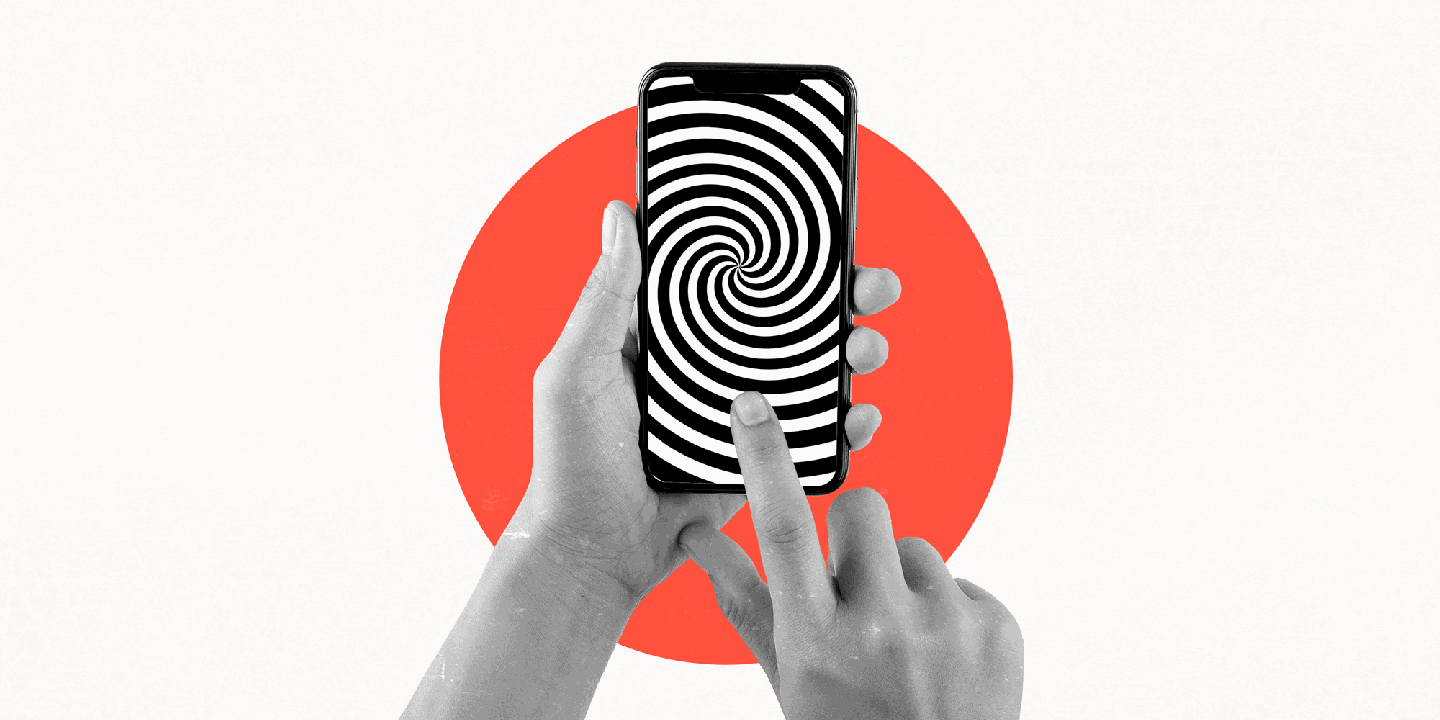‘Doomscrolling’ is bad for your mental health. Do this instead
You can thank your brain for looking for potential threats — but you shouldn’t feed into it.

[Aug. 6, 2020: Today]
We’ve all been there: You hop on your phone to learn what’s unfolding with the pandemic or in the political landscape and all of sudden you’re completely sucked in by the latest bit of bad news. Your heart rate quickens as you flick through post after post after post. It’s all terrible, but you can’t stop now. You need to know. Your thumb can scarcely keep up with your eyes as you scan hungrily for more information. When your screen runs out of fresh content, you hit refresh and the ride starts all over.
It’s called “doomscrolling” (or “doomsurfing”) — a portmanteau that Merriam-Webster defines as “referring to the tendency to continue to surf or scroll through bad news, even though that news is saddening, disheartening or depressing”. The word likely first appeared in a tweet (fitting given that Twitter is the ideal platform for doomscrolling) back in 2018, but has taken off since COVID-19 thrust the world into crisis mode.
Doomscrolling can cause physical and mental discomfort
“Being constantly showered with fear-inducing content can lead to a variety of anxiety issues that can cause physical and mental discomfort,” said Dr. Pavan Madan, a psychiatrist at Community Psychiatry. “Physical effects of anxiety may include headache, upset stomach, muscle tension, feeling tired easily, not feeling hungry or having difficulty sleeping. Being exposed to excessive negative content can exacerbate depression in those predisposed to it. When faced with fear or threat, people may even resort to hostile or aggressive behavior. Staying up late at night while doomscrolling not only encroaches in your sleep time, but also makes it harder to fall asleep or have a restful sleep.”
Like these kind of stories? Get The Brighter Side of News' newsletter.
‘Doomscrolling’ is a modern version of primal behavior
Doomscrolling may be a new catchy term, but it is not a new behavior — and at its root it comes from a good place.
“The part of our brain that governs doomscrolling is ancient,” said Dr. Aditi Nerurkar, a physician at Harvard Medical School with an expertise in the science of resilience and the biology of stress. “This is the lizard or reptilian brain, though I prefer to [refer to] it as the limbic system. It's made up of a structure called the amygdala, which functions in self-preservation. It's an adaptive response to stress, meaning our species has learned to keep going and thrive and survive. Scanning for danger, looking around, making sure we're all OK that is a normal and healthy response to stress.”
The pandemic, as Nerurkar explained, is a time of acute stress — “so what we're doing is we're always scanning for danger. When we were cave people, we were looking out for tigers and other threats to our tribe. COVID, metaphorically, is a tiger.”
Our brain is already revved up in fight or flight mode because of the pandemic, and so it’s only natural that it would be on the lookout for more threats. We should thank our brains for this protective mechanism — but we shouldn’t feed into it.
“Doomscrolling is not healthy because it can lead to a sense of helplessness and a sense that there is nothing effective to be done,” said Mari Verano, a licensed marriage and family therapist. “I tell my clients to look for ‘proof of the good’ in order to practice gratitude and resilience. Doomscrolling is looking repeatedly at ‘proof of the bad,’ which strengthens the brain’s negative bias.”
How to stop doomscrolling in 6 steps
Doomscrolling is all too easy to do because, as Brian Wind, Ph.D., clinical psychologist and former co-chair of the American Psychological Association’s Advisory Committee on Colleague Assistance noted, “Media publications sensationalize their headlines because that grabs people’s attention and feeds our need to feel reassured by finding out more about potential dangers and threats.”
Don’t use your phone as an alarm. If you have easy access to your phone in the morning, you’ll likely go to check social media without even thinking about it. Nerurkar emphasized the importance of “working with your biology, not against it.” That means creating boundaries with your phone by using a traditional alarm clock and keeping your phone away from the bed.
Make checking your phone intentional — not compulsive. “In this time of heightened stress, you can't expect to not check your phone. If your phone is 10 feet away, it becomes an intentional choice to stand up, move away from the workstation and go check my phone,” said Nerurkar.
Opt-out of news alerts. “Opt out of autologin features and news alerts,” advised Nerurkar. “Become intentional about signing on to read. When you start being intentional you start using other aspects of your brain. Make it difficult just a little bit. You need to move away from the mindless repetition and shift to intentional checking.”
Replace your phone with something that brings joy. “Nature doesn't like a vacuum, so keep something where you used to have your phone — like a book of poetry that you really enjoy,” said Nerurkar. “So when you read a quick passage and get that dopamine hit you're looking for — but it's a pleasant, uplifting, inspirational and perhaps calming jolt.”
Schedule a time to consume news. “Choose a specific time during the day to check the news, and limit it to 15-20 minutes,” recommended Michael Ceely, a psychotherapist. “If you feel tempted to go past your allotted time, tell yourself that if something really important happens, you’ll hear about it.”
Give it time. In the beginning, creating boundaries with your phone and the news may feel difficult, but give it time. You (and your lizard brain) will get used to it. “It’s easy to quell something that you've been doing for two weeks, but it’s more difficult to quell something you’ve been doing for 5 months — or for years,” said Nerurkar. “But the brain is better than any smartphone out there. It is always adapting and evolving and responding to its external cues so what you focus on grows. Over time there will be a difference.”.... Read More



